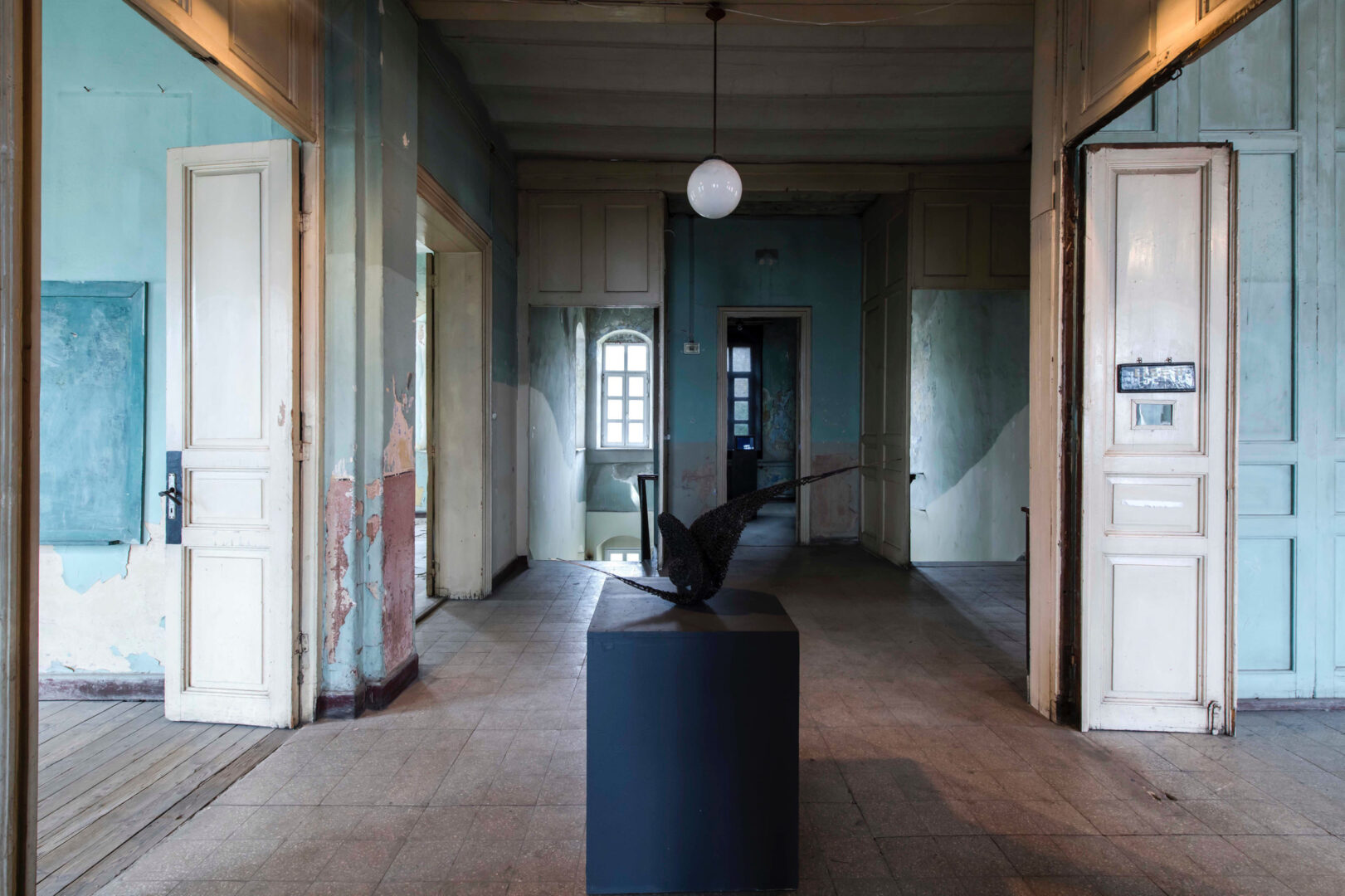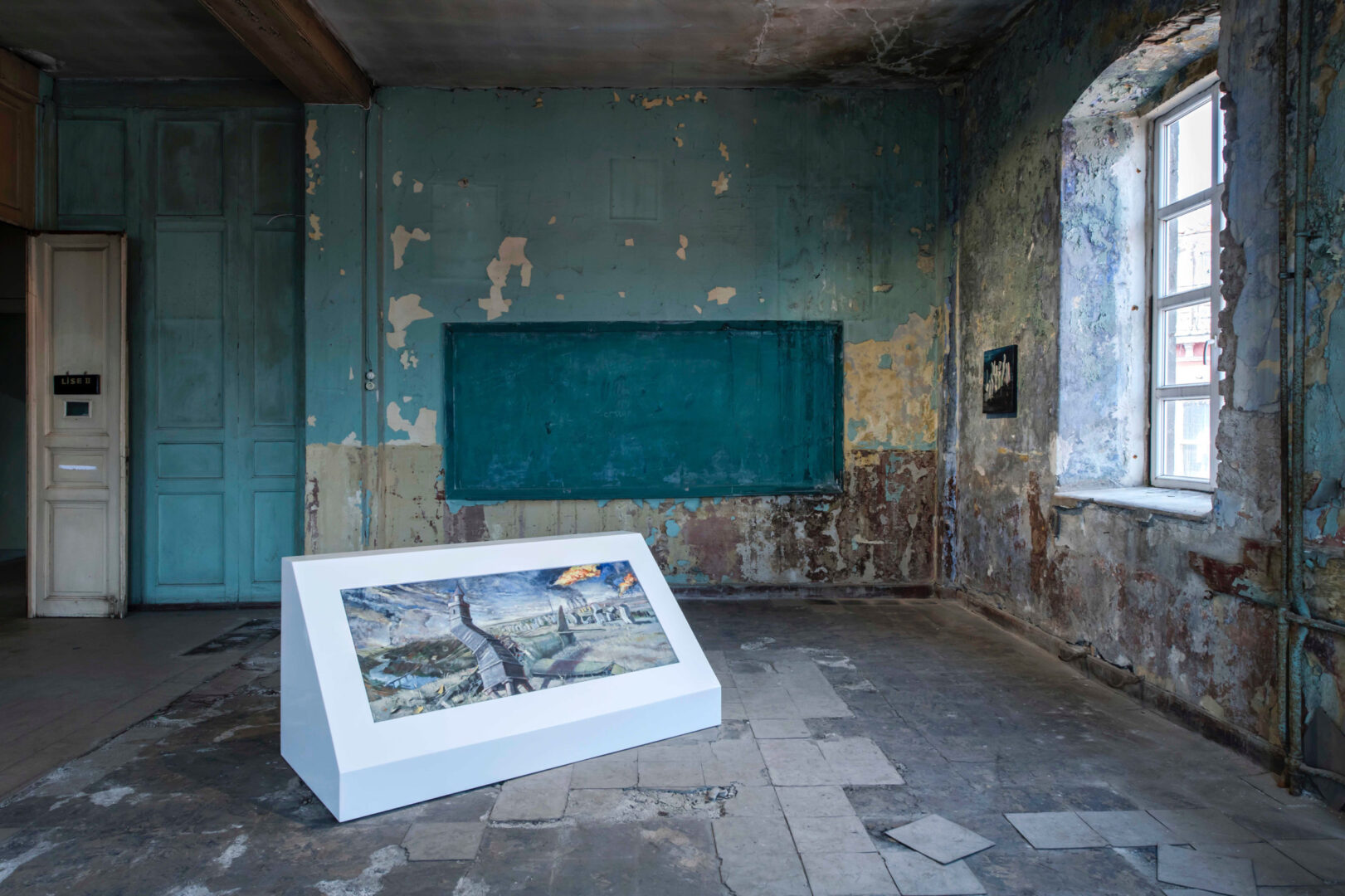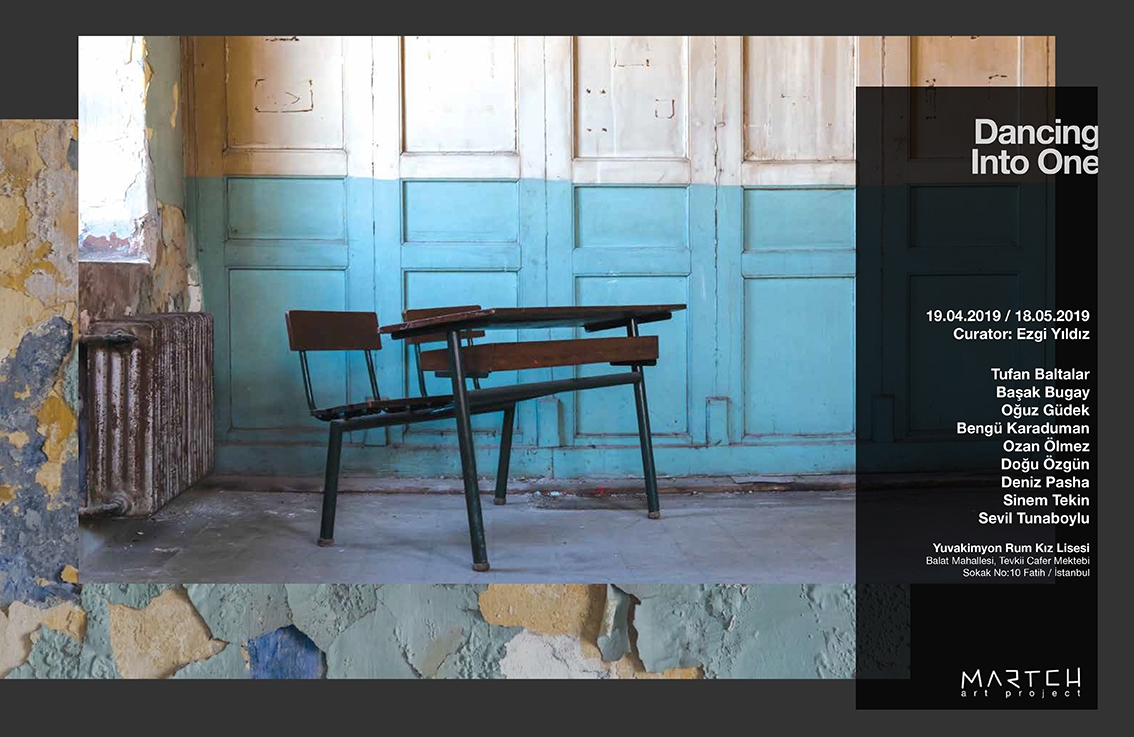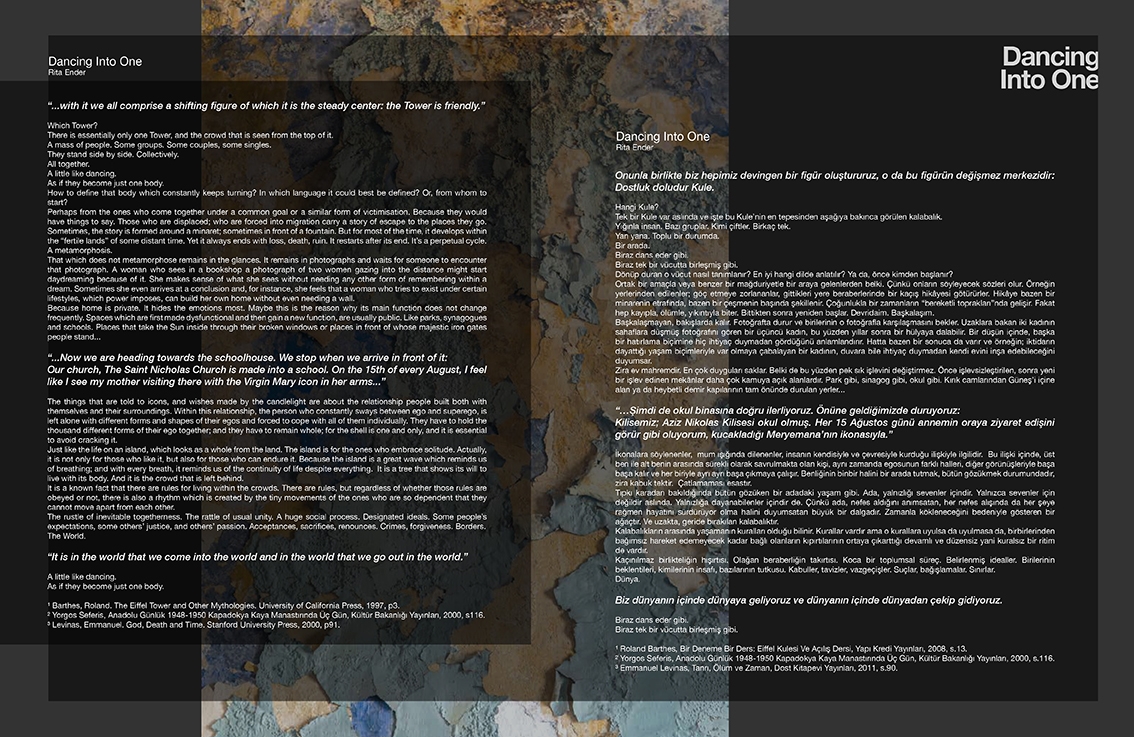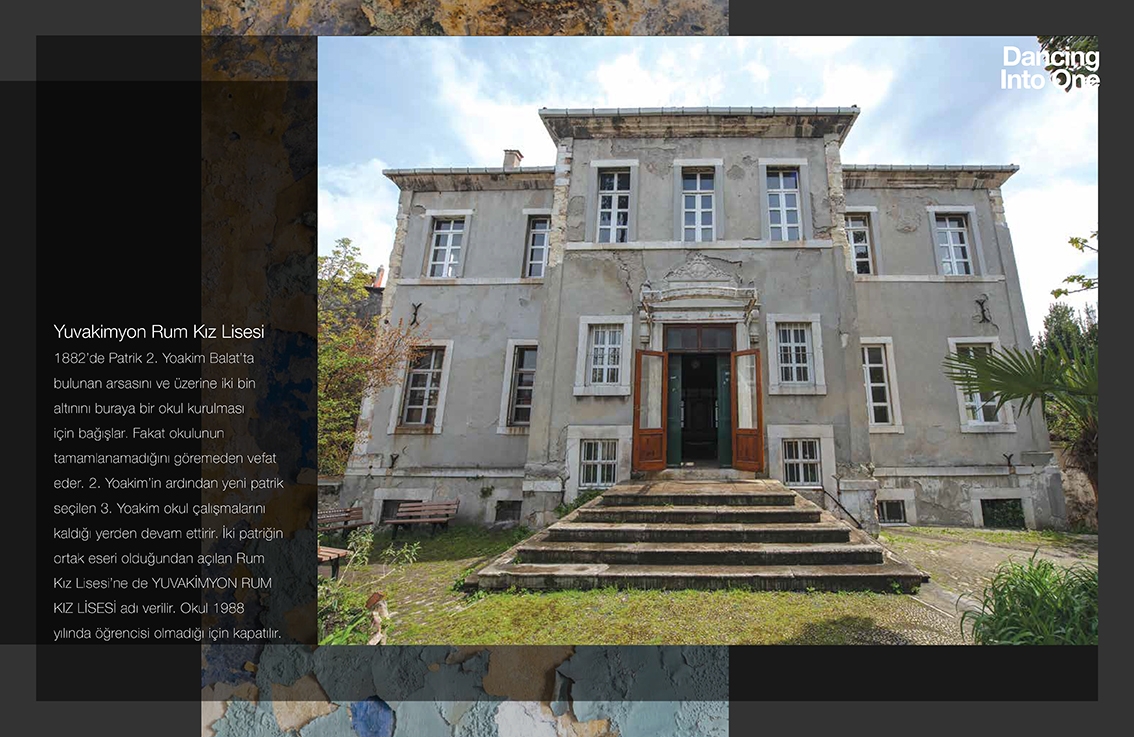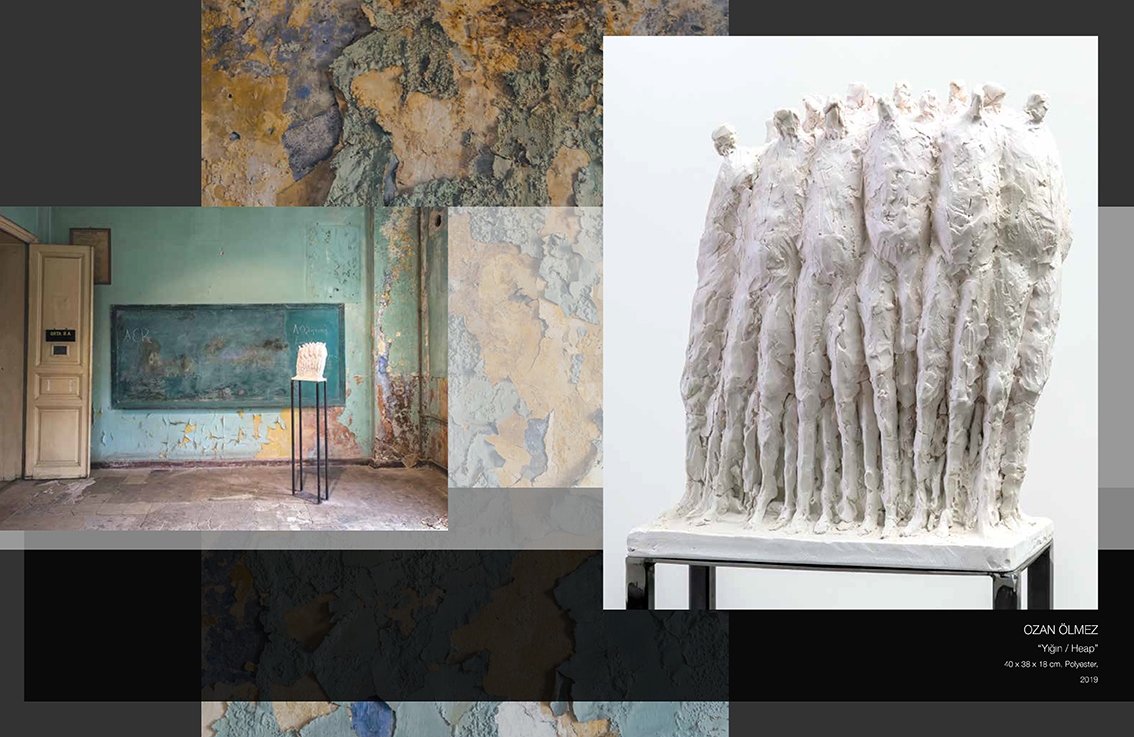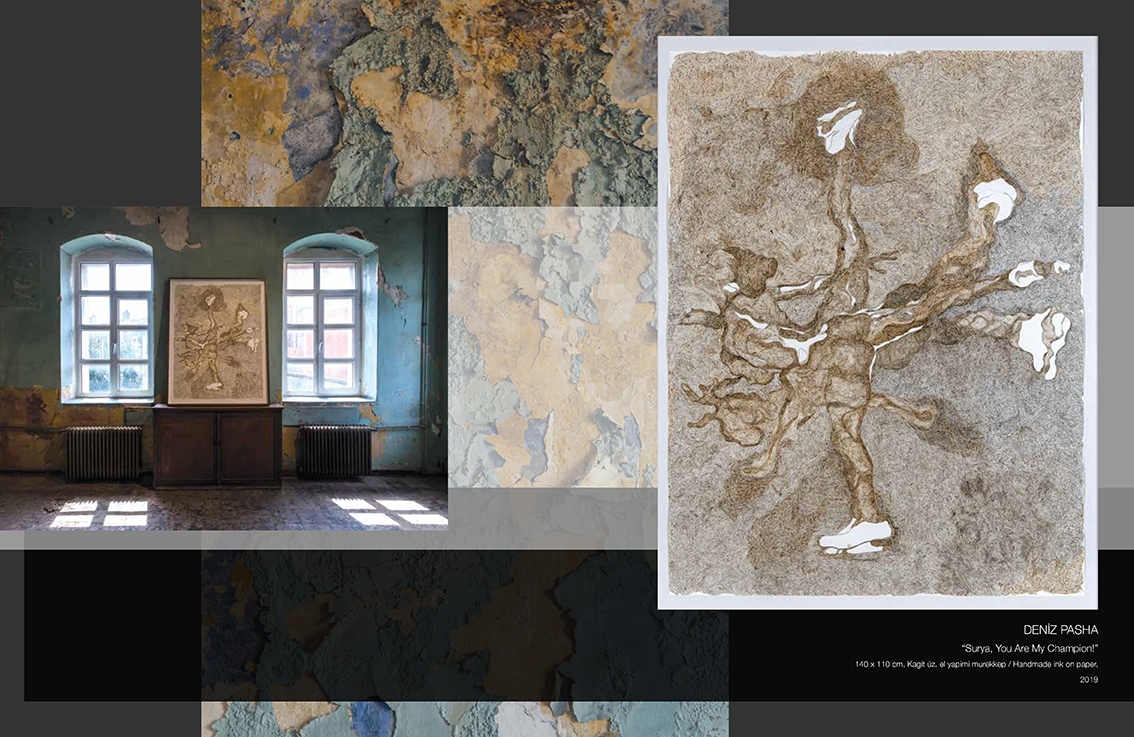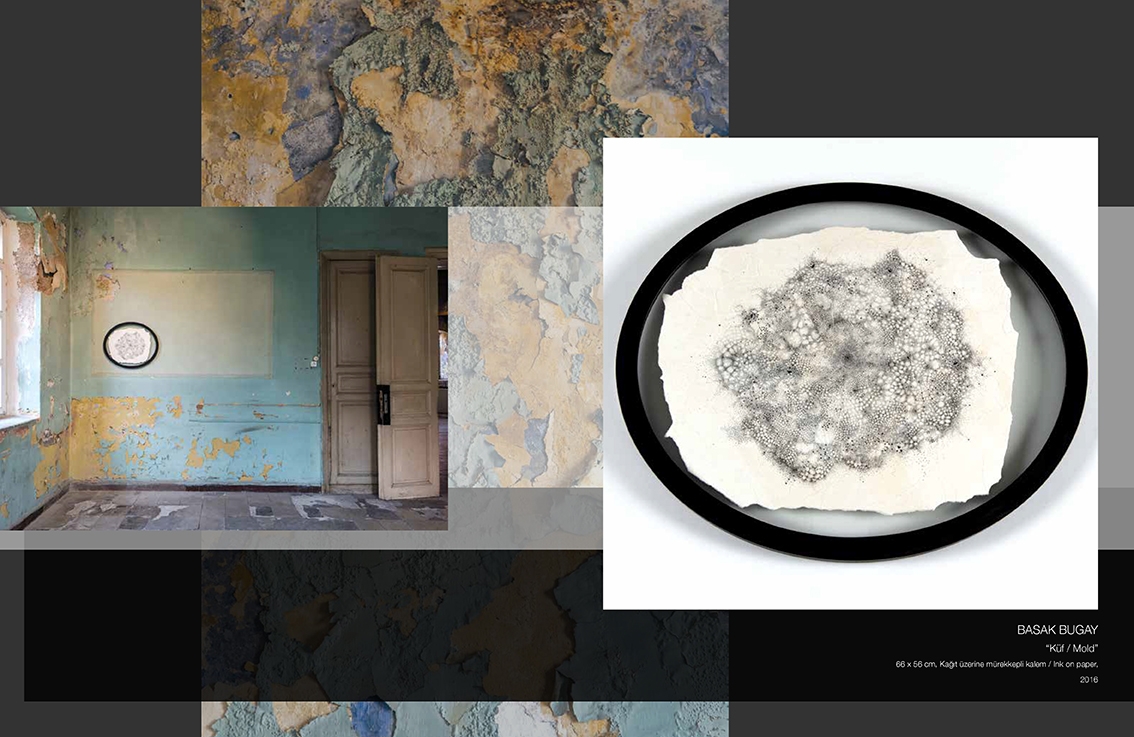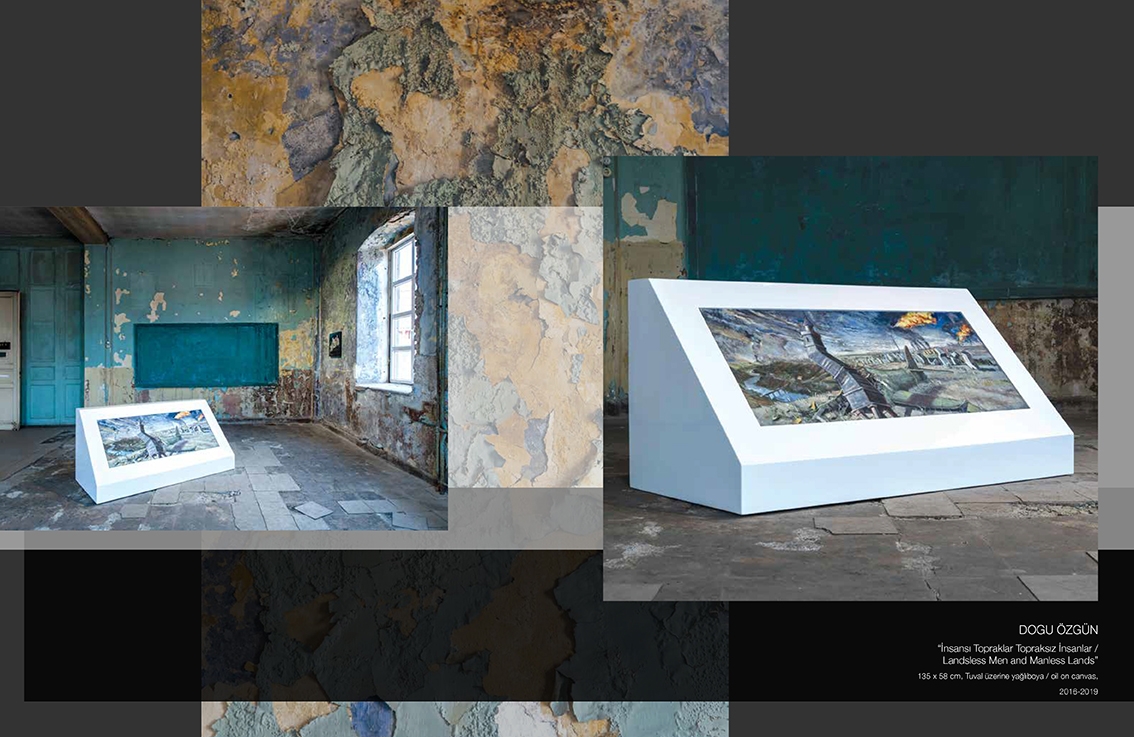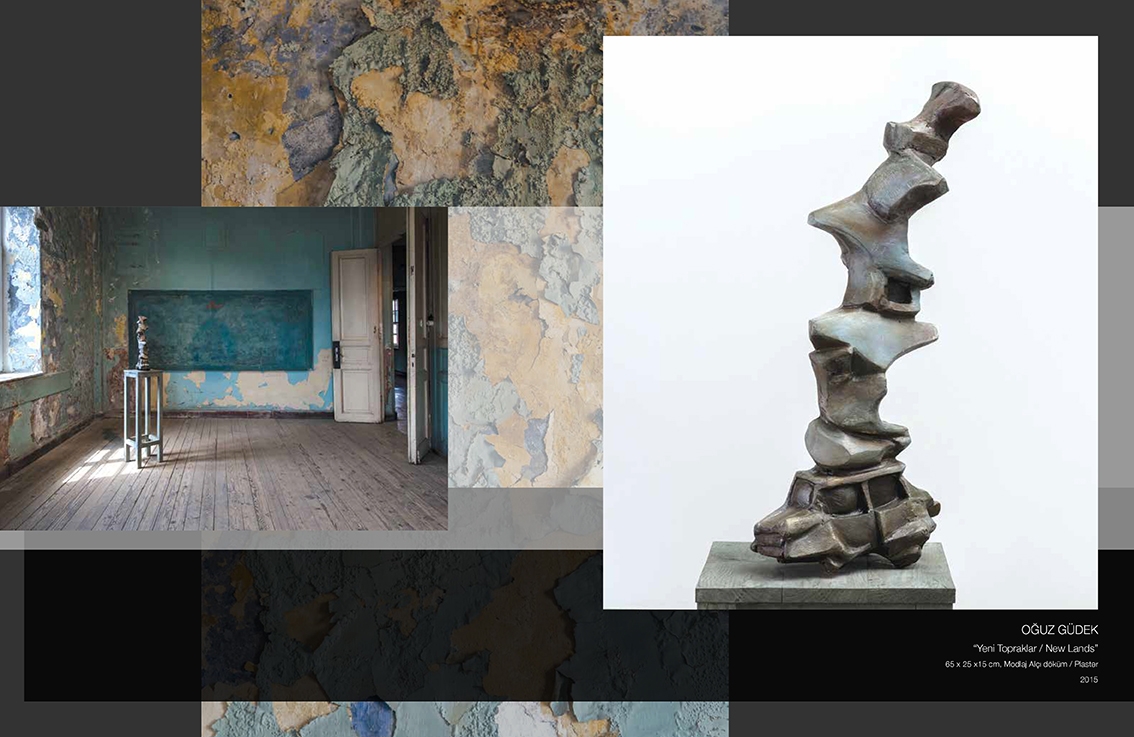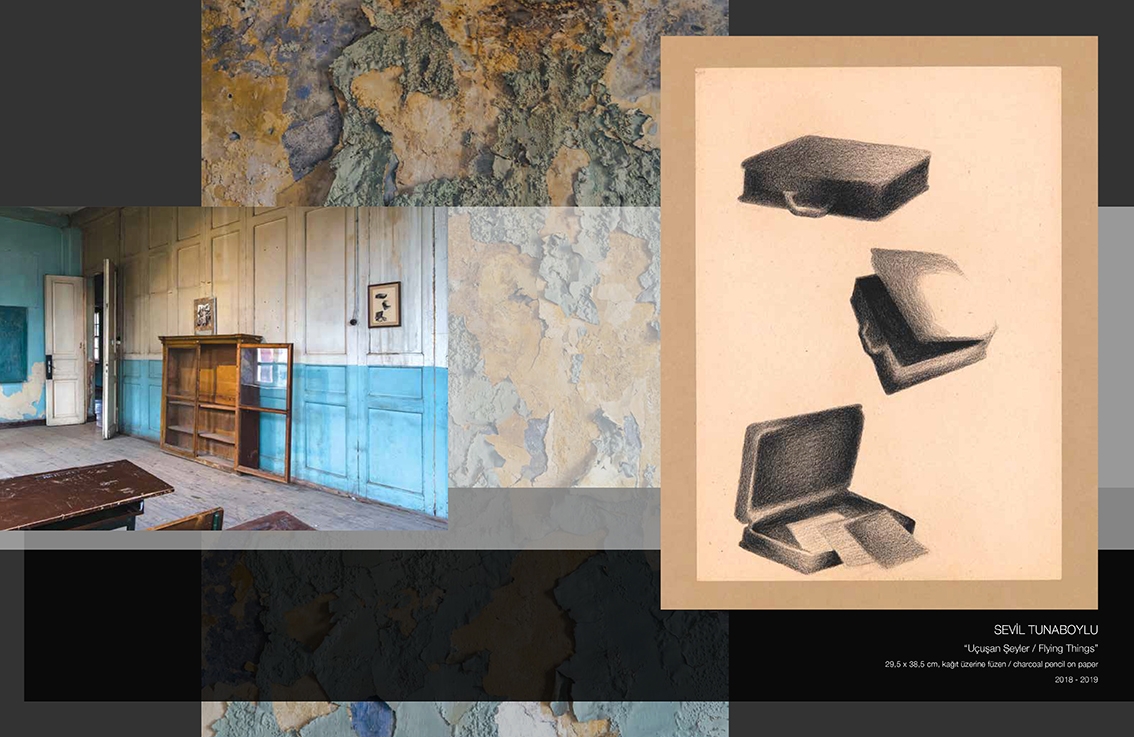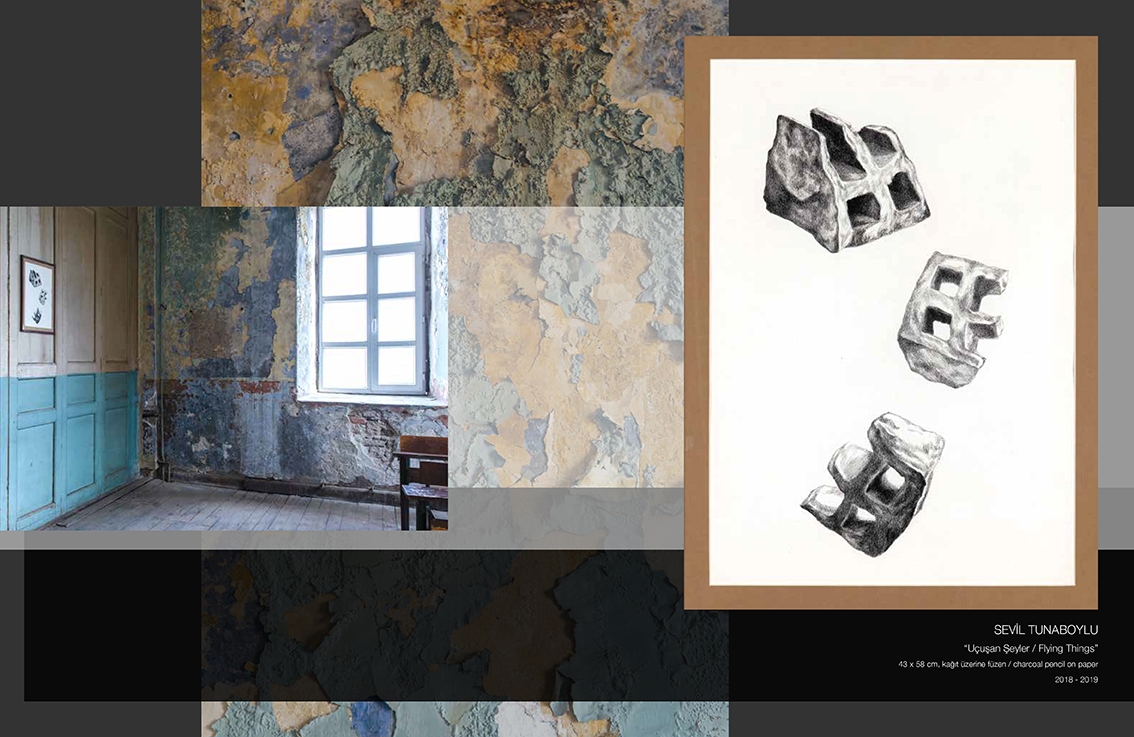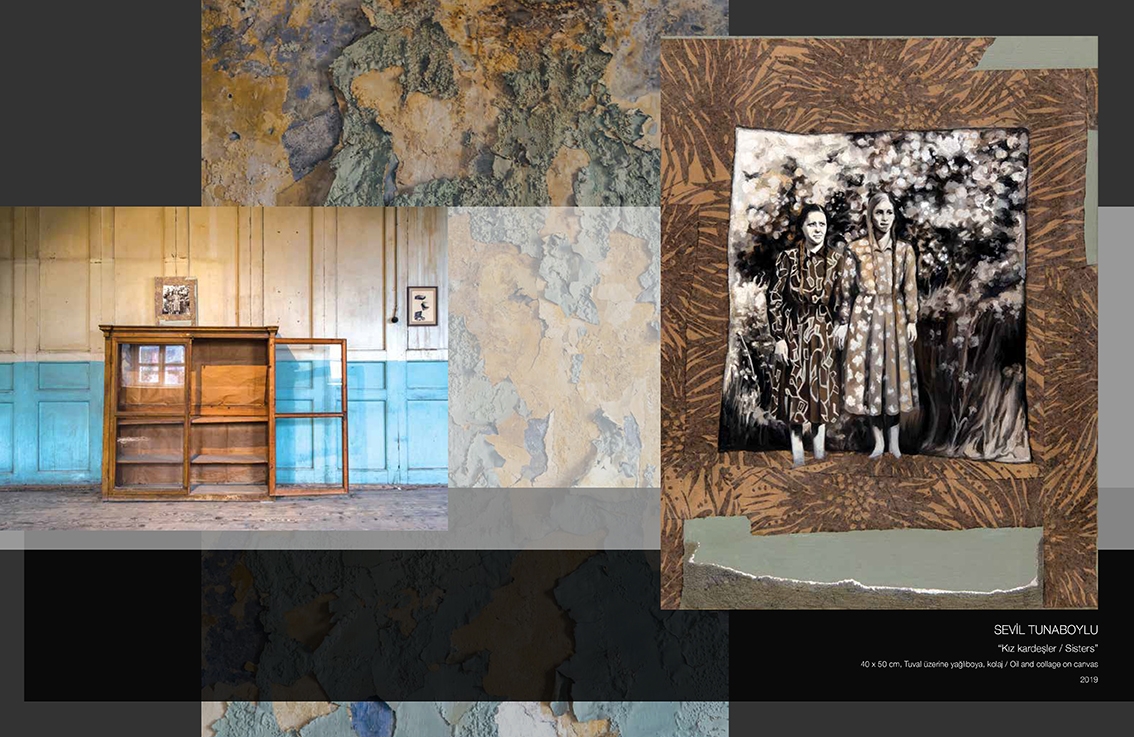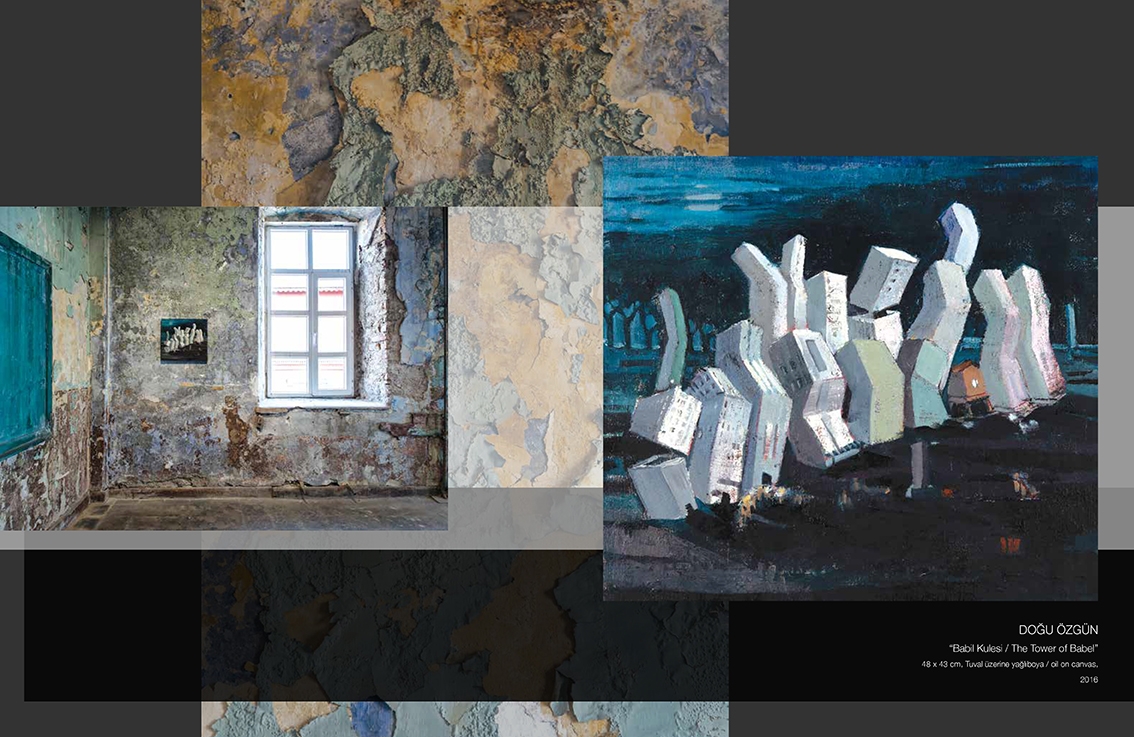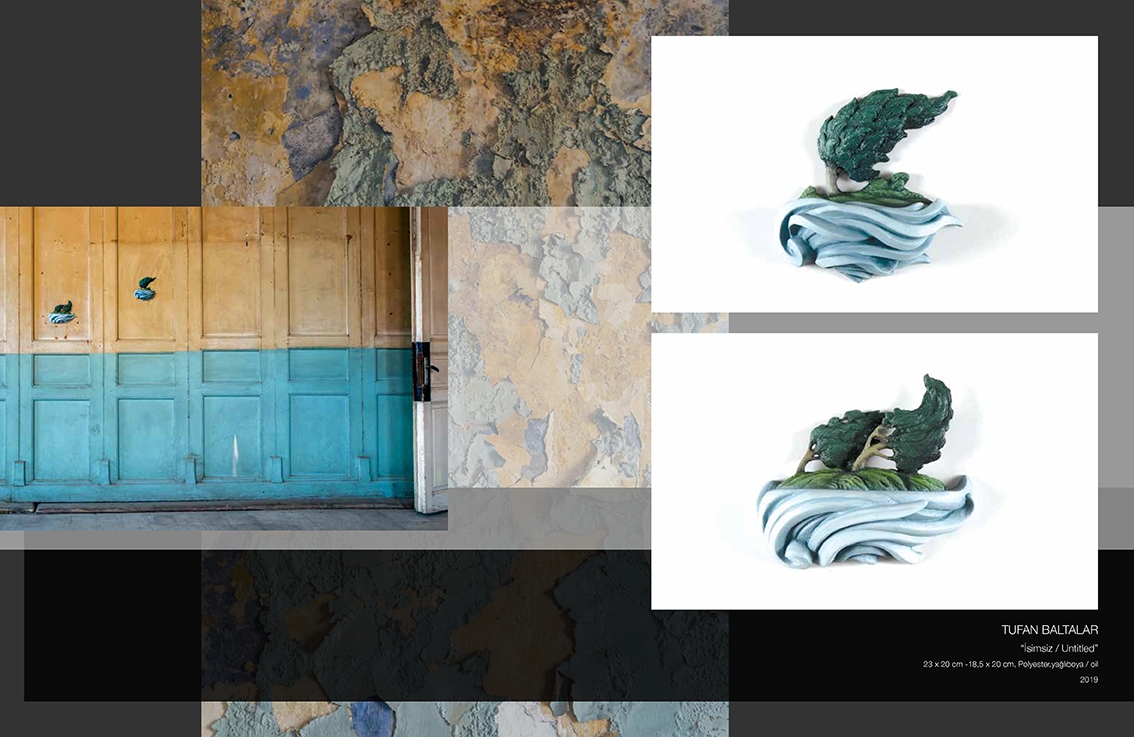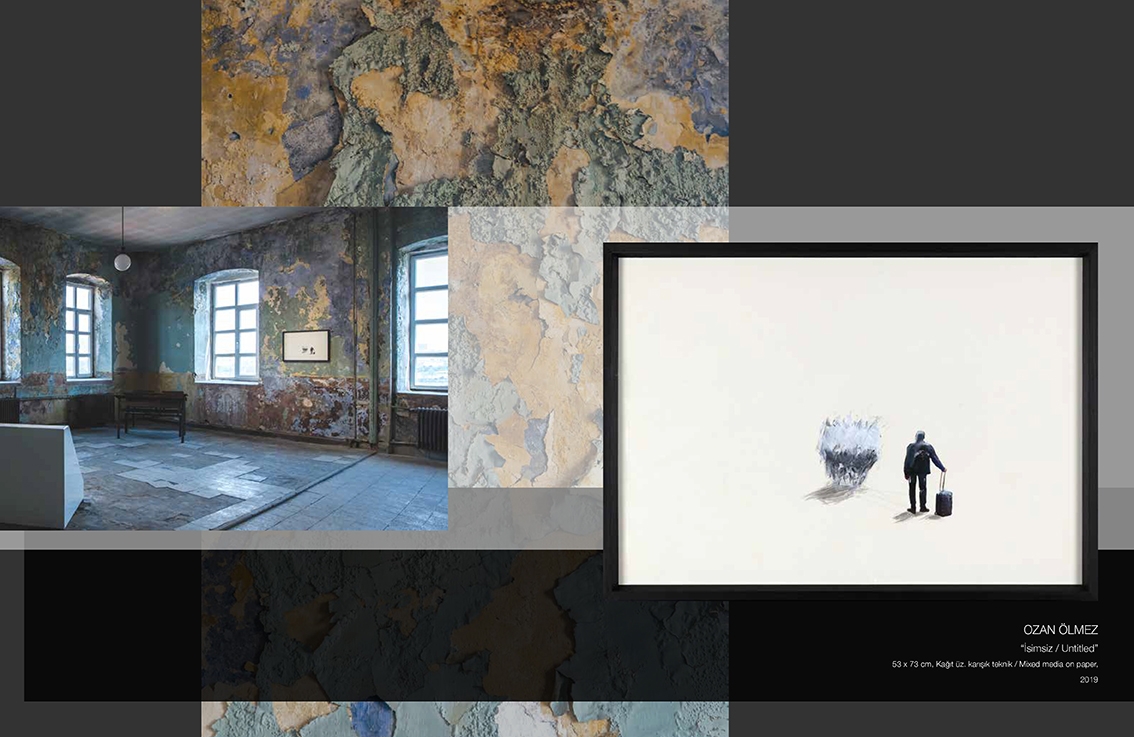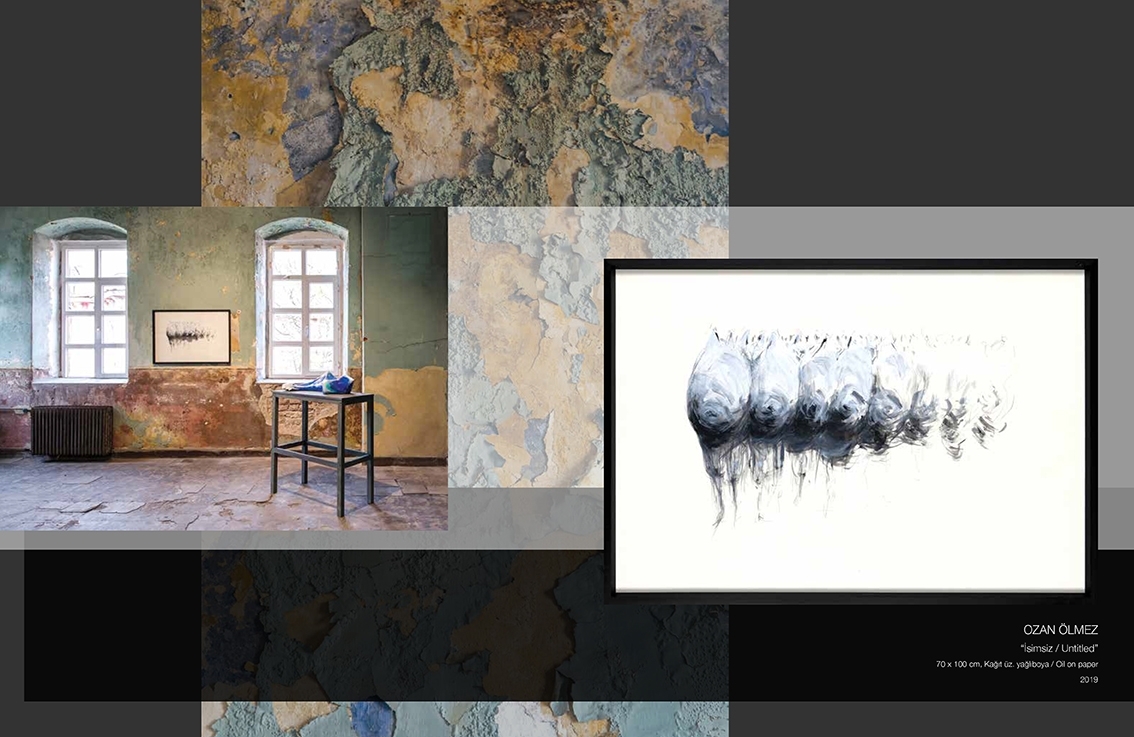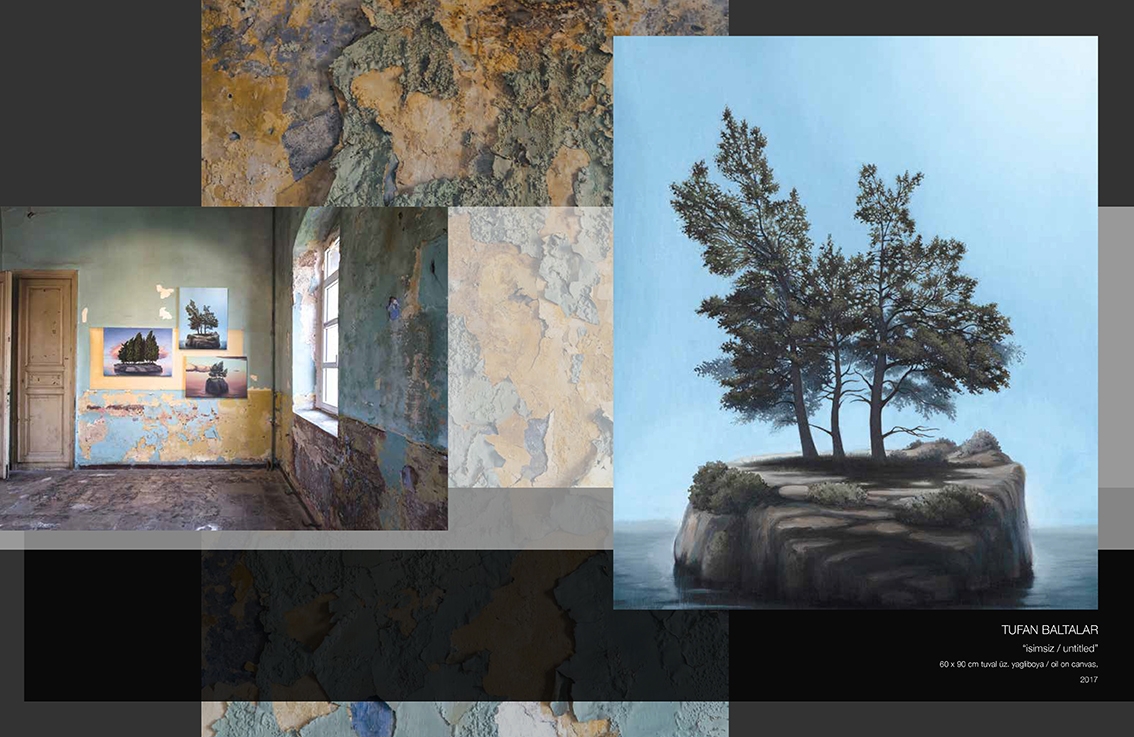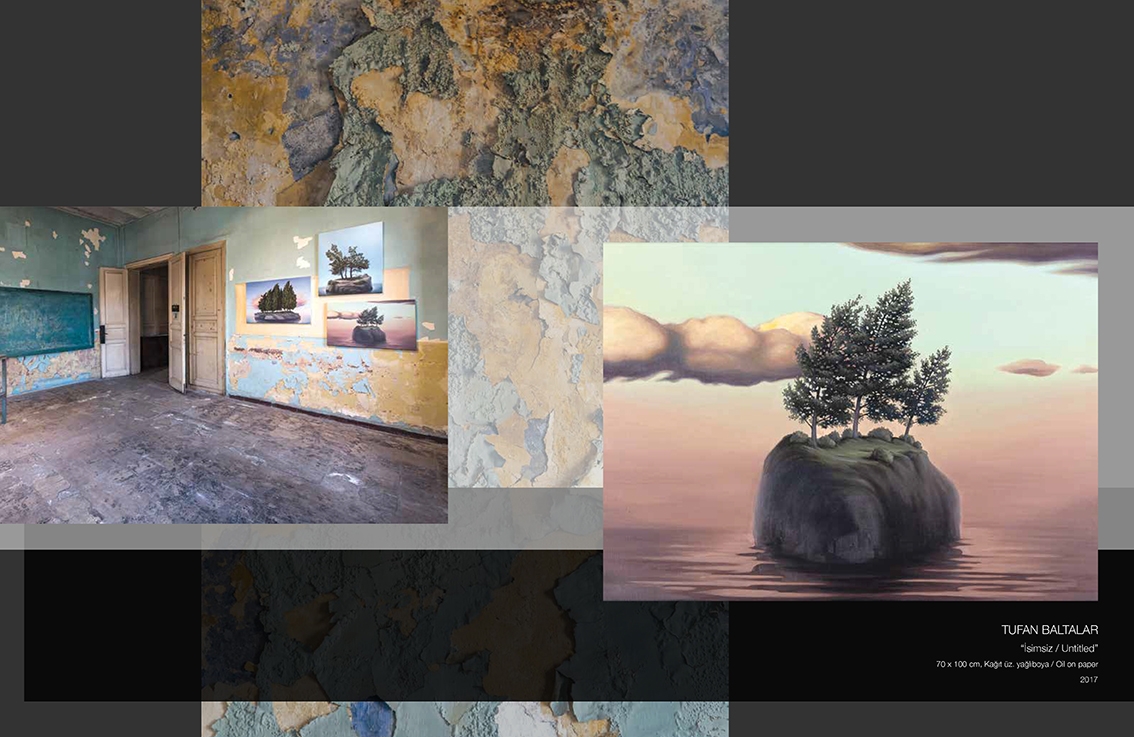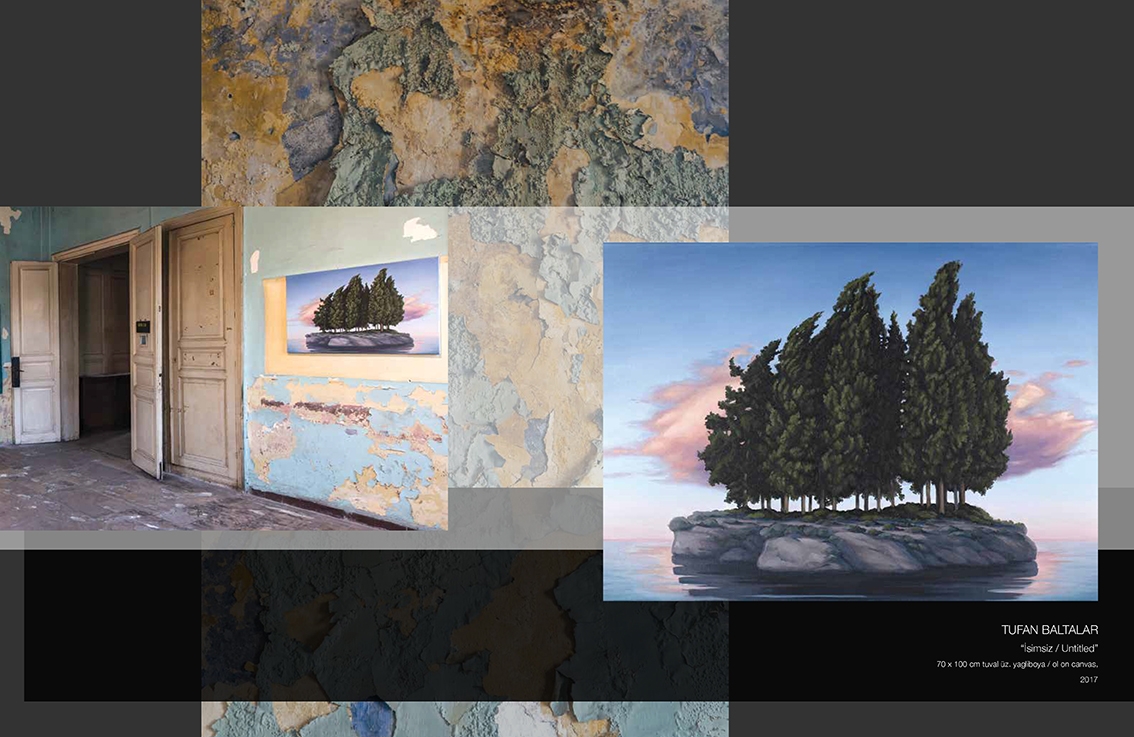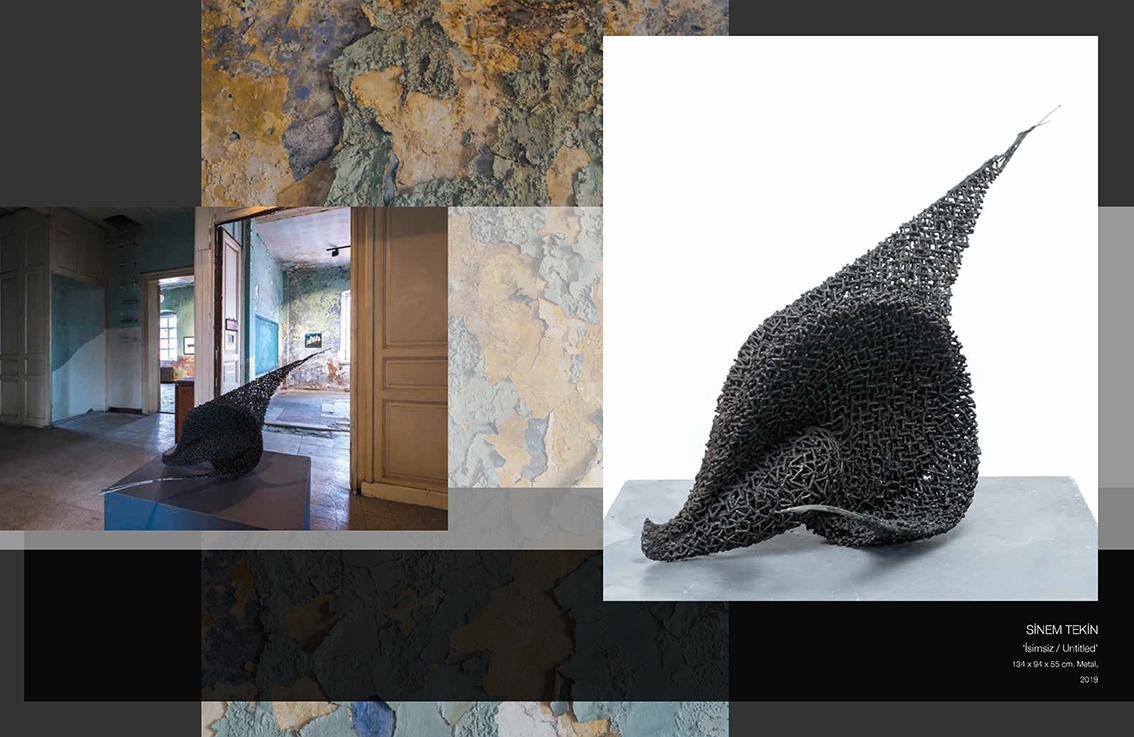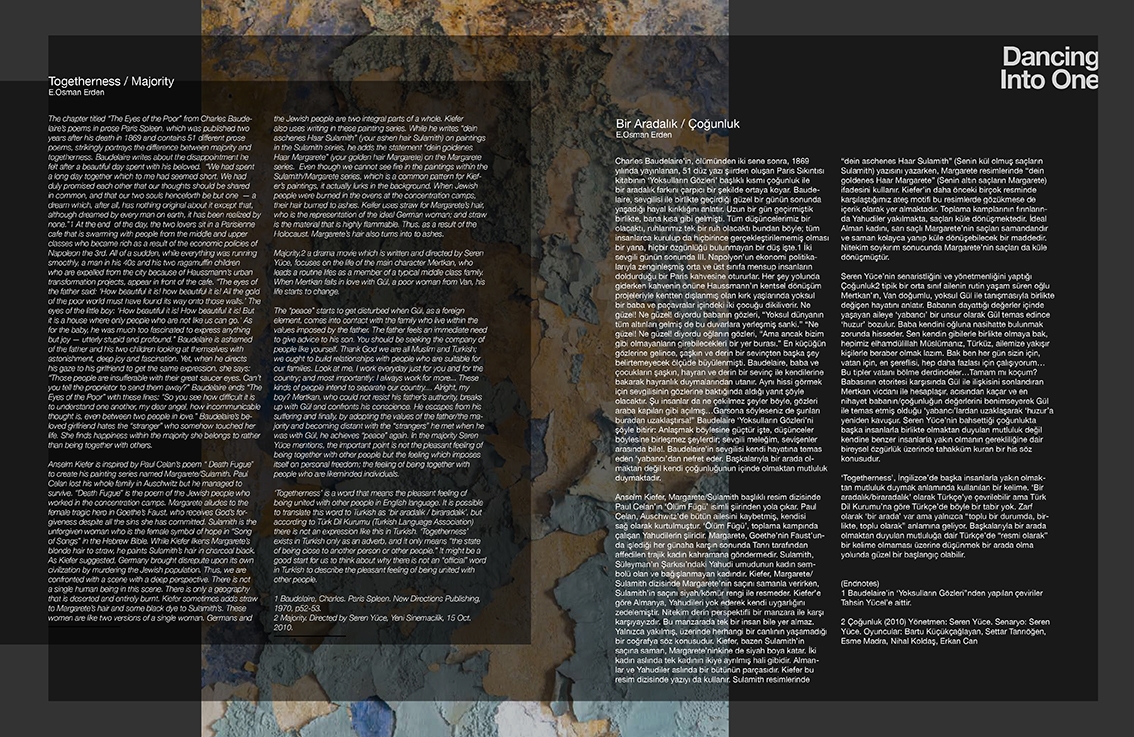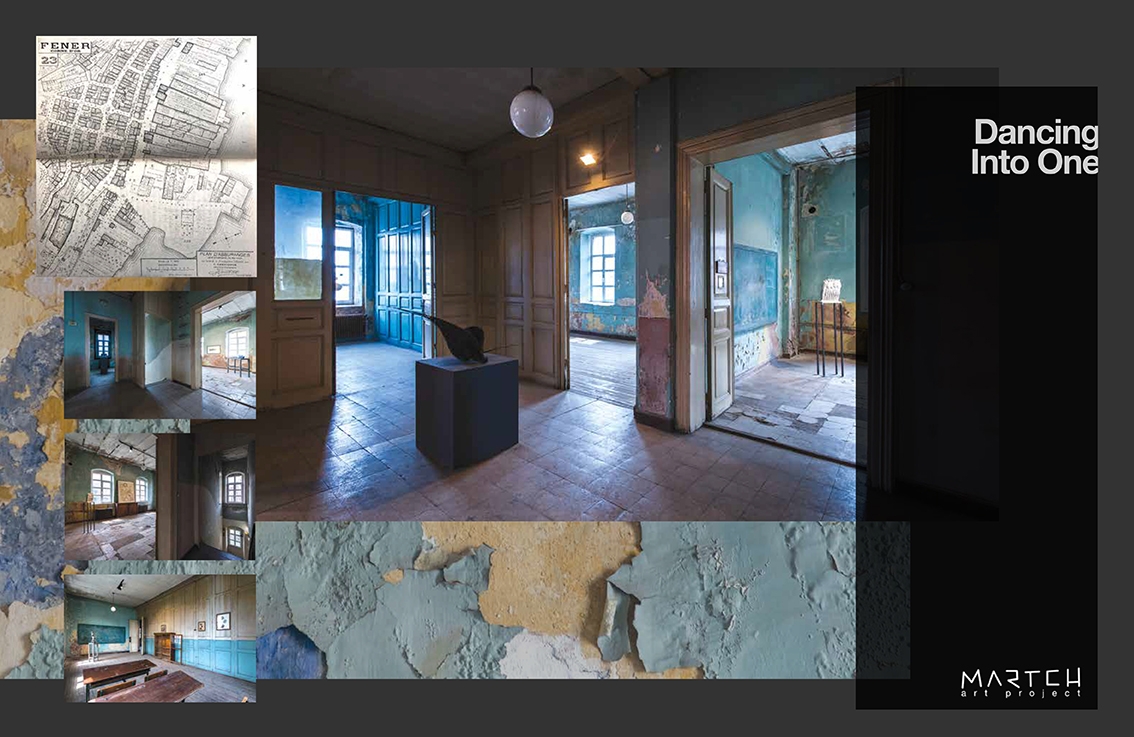DANCING INTO ONE
19.04.2019 – 18.05.2019 / Yuvakimyon Rum Kız Lisesi
Artist
- Tufan Baltalar
- Başak Bugay
- Oğuz Güdek
- Bengü Karaduman
- Ozan Ölmez
- Doğu Özgün
- Deniz Pasha
- Sinem Tekin
- Sevil Tunaboylu
Togetherness / Majority
E. Osman Erden
The chapter titled “The Eyes of the Poor” from Charles Baudelaire’s poems in prose Paris Spleen, which was published two years after his death in 1869 and contains 51 different prose poems, strikingly portrays the difference between majority and togetherness. Baudelaire writes about the disappointment he felt after a beautiful day spent with his beloved. “We had spent a long day together which to me had seemed short. We had duly promised each other that our thoughts should be shared in common, and that our two souls henceforth be but one — a dream which, after all, has nothing original about it except that, although dreamed by every man on earth, it has been realized by none.”1 At the end of the day, the two lovers sit in a Parisienne cafe that is swarming with people from the middle and upper classes who became rich as a result of the economic policies of Napoleon the 3rd. All of a sudden, while everything was running smoothly, a man in his 40s and his two ragamuffin children who are expelled from the city because of Haussmann’s urban transformation projects, appear in front of the cafe. “The eyes of the father said: ‘How beautiful it is! how beautiful it is! All the gold of the poor world must have found its way onto those walls.’ The eyes of the little boy: ‘How beautiful it is! How beautiful it is! But it is a house where only people who are not like us can go.’ As for the baby, he was much too fascinated to express anything but joy — utterly stupid and profound.” Baudelaire is ashamed of the father and his two children looking at themselves with astonishment, deep joy and fascination. Yet, when he directs his gaze to his girlfriend to get the same expression, she says: “Those people are insufferable with their great saucer eyes. Can’t you tell the proprietor to send them away?” Baudelaire ends “The Eyes of the Poor” with these lines: “So you see how difficult it is to understand one another, my dear angel, how incommunicable thought is, even between two people in love.”
Baudelaire’s beloved girlfriend hates the “stranger” who somehow touched her life. She finds happiness within the majority she belongs to rather than being together with others.
+ + +
Anselm Kiefer is inspired by Paul Celan’s poem ” Death Fugue” to create his painting series named Margarete/Sulamith. Paul Celan lost his whole family in Auschwitz but he managed to survive. “Death Fugue” is the poem of the Jewish people who worked in the concentration camps. Margarete alludes to the female tragic hero in Goethe’s Faust, who receives God’s forgiveness despite all the sins she has committed. Sulamith is the unforgiven woman who is the female symbol of hope in “Song of Songs” in the Hebrew Bible. While Kiefer likens Margarete’s blonde hair to straw, he paints Sulamith’s hair in charcoal black. As Kiefer suggested, Germany brought disrepute upon its own civilization by murdering the Jewish population. Thus, we are confronted with a scene with a deep perspective. There is not a single human being in this scene. There is only a geography that is deserted and entirely burnt. Kiefer sometimes adds straw to Margarete’s hair and some black dye to Sulamith’s. These women are like two versions of a single woman. Germans and the Jewish people are two integral parts of a whole. Kiefer also uses writing in these painting series. While he writes “dein aschenes Haar Sulamith” (your ashen hair Sulamith) on paintings in the Sulamith series, he adds the statement “dein goldenes Haar Margarete” (your golden hair Margarete) on the Margarete series. Even though we cannot see fire in the paintings within the Sulamith/Margarete series, which is a common pattern for Kiefer’s paintings, it actually lurks in the background. When Jewish people were burned in the ovens at the concentration camps, their hair burned to ashes. Keifer uses straw for Margarete’s hair, who is the representation of the ideal German woman; and straw is the material that is highly flammable. Thus, as a result of the Holocaust.
Margarete’s hair also turns into to ashes.
+ + +
Majority², a drama movie which is written and directed by Seren Yüce, focuses on the life of the main character Mertkan, who leads a routine lifes as a member of a typical middle class family. When Mertkan falls in love with Gül, a poor woman from Van, his life starts to change.
The “peace” starts to get disturbed when Gül, as a foreign element, comes into contact with the family who live within the values imposed by the father. The father feels an immediate need to give advice to his son. You should be seeking the company of people like yourself. Thank God we are all Muslim and Turkish; we ought to build relationships with people who are suitable for our families. Look at me, I work everyday just for you and for the country; and most importantly: I always work for more… These kinds of people intend to separate our country…. Alright, my boy? Mertkan, who could not resist his father’s authority, breaks up with Gül and confronts his conscience. He escapes from his suffering and finally, by adopting the values of the father/the majority and becoming distant with the “strangers” he met when he was with Gül, he achieves “peace” again. In the majority Seren Yüce mentions, the important point is not the pleasant feeling of being together with other people but the feeling which imposes itself on personal freedom; the feeling of being together with people who are likeminded individuals.
+ + +
“Togetherness” is a word that means the pleasant feeling of being united with other people in English language. It is possible to translate this word to Turkish as ‘bir aradalık / biraradalık’, but according to Türk Dil Kurumu (Turkish Language Association) there is not an expression like this in Turkish. ‘Togetherness’ exists in Turkish only as an adverb, and it only means “the state of being close to another person or other people.” It might be a good start for us to think about why there is not an “official” word in Turkish to describe the pleasant feeling of being united with other people.
1Baudelaire, Charles. Paris Spleen. New Directions Publishing, 1970, p52-53.
²Majority. Directed by Seren Yüce, Yeni Sinemacilik, 15 Oct. 2010.
Bir Aradalık / Çoğunluk
E.Osman Erden
Charles Baudelaire’in, ölümünden iki sene sonra, 1869 yılında yayınlanan, 51 düz yazı şiirden oluşan Paris Sıkıntısı kitabının ‘Yoksulların Gözleri’ başlıklı kısmı çoğunluk ile bir aradalık farkını çarpıcı bir şekilde ortaya koyar. Baudelaire, sevgilisi ile birlikte geçirdiği güzel bir günün sonunda yaşadığı hayal kırıklığını anlatır. Uzun bir gün geçirmiştik birlikte, bana kısa gibi gelmişti. Tüm düşüncelerimiz bir olacaktı, ruhlarımız tek bir ruh olacaktı bundan böyle; tüm insanlarca kurulup da hiçbirince gerçekleştirilememiş olması bir yana, hiçbir özgünlüğü bulunmayan bir düş işte.1 İki sevgili günün sonunda III. Napolyon’un ekonomi politikalarıyla zenginleşmiş orta ve üst sınıfa mensup insanların doldurduğu bir Paris kahvesine otururlar. Her şey yolunda giderken kahvenin önüne Haussmann’ın kentsel dönüşüm projeleriyle kentten dışlanmış olan kırk yaşlarında yoksul bir baba ve paçavralar içindeki iki çocuğu dikiliverir. Ne güzel! Ne güzel! diyordu babanın gözleri, “Yoksul dünyanın tüm altınları gelmiş de bu duvarlara yerleşmiş sanki.” “Ne güzel! Ne güzel! diyordu oğlanın gözleri, “Ama ancak bizim gibi olmayanların girebilecekleri bir yer burası.” En küçüğün gözlerine gelince, şaşkın ve derin bir sevinçten başka şey belirtemeyecek ölçüde büyülenmişti. Baudelaire, baba ve çocukların şaşkın, hayran ve derin bir sevinç ile kendilerine bakarak hayranlık duymalarından utanır. Aynı hissi görmek için sevgilisinin gözlerine baktığında aldığı yanıt şöyle olacaktır. Şu insanlar da ne çekilmez şeyler böyle, gözleri araba kapıları gibi açılmış…Garsona söyleseniz de şunları buradan uzaklaştırsa!” Baudelaire ‘Yoksulların Gözleri’ni şöyle bitirir: Anlaşmak böylesine güçtür işte, düşünceler böylesine birleşmez şeylerdir; sevgili meleğim, sevişenler arasında bile!. Baudelaire’in sevgilisi kendi hayatına temas eden ‘yabancı’dan nefret eder. Başkalarıyla bir arada olmaktan değil kendi çoğunluğunun içinde olmaktan mutluluk duymaktadır.
+ + +
Anselm Kiefer, Margarete/Sulamith başlıklı resim dizisinde Paul Celan’ın ‘Ölüm Fügü’ isimli şiirinden yola çıkar. Paul Celan, Auschwitz’de bütün ailesini kaybetmiş, kendisi sağ olarak kurtulmuştur. ‘Ölüm Fügü’, toplama kampında çalışan Yahudilerin şiiridir. Margarete, Goethe’nin Faust’unda işlediği her günaha karşın sonunda Tanrı tarafından affedilen trajik kadın kahramana göndermedir. Sulamith, Süleyman’ın Şarkısı’ndaki Yahudi umudunun kadın sembolü olan ve bağışlanmayan kadındır. Kiefer, Margarete/Sulamith dizisinde Margarete’nin saçını samanla verirken, Sulamith’in saçını siyah/kömür rengi ile resmeder. Kiefer’e göre Almanya, Yahudileri yok ederek kendi uygarlığını zedelemiştir. Nitekim derin perspektifli bir manzara ile karşı karşıyayızdır. Bu manzarada tek bir insan bile yer almaz. Yalnızca yakılmış, üzerinde herhangi bir canlının yaşamadığı bir coğrafya söz konusudur. Kiefer, bazen Sulamith’in saçına saman, Margarete’ninkine de siyah boya katar. İki kadın aslında tek kadının ikiye ayrılmış hali gibidir. Almanlar ve Yahudiler aslında bir bütünün parçasıdır. Kiefer bu resim dizisinde yazıyı da kullanır. Sulamith resimlerinde “dein aschenes Haar Sulamith” (Senin kül olmuş saçların Sulamith) yazısını yazarken, Margarete resimlerinde “dein goldenes Haar Margarete” (Senin altın saçların Margarete) ifadesini kullanır. Kiefer’in daha önceki birçok resminde karşılaştığımız ateş motifi bu resimlerde gözükmese de içerik olarak yer almaktadır. Toplama kamplarının fırınlarında Yahudiler yakılmakta, saçları küle dönüşmektedir. İdeal Alman kadını, sarı saçlı Margarete’nin saçları samandandır ve saman kolayca yanıp küle dönüşebilecek bir maddedir. Nitekim soykırım sonucunda Margarete’nin saçları da küle dönüşmüştür.
+ + +
Seren Yüce’nin senaristliğini ve yönetmenliğini yaptığı Çoğunluk2 tipik bir orta sınıf ailenin rutin yaşam süren oğlu Mertkan’ın, Van doğumlu, yoksul Gül ile tanışmasıyla birlikte değişen hayatını anlatır. Babanın dayattığı değerler içinde yaşayan aileye ‘yabancı’ bir unsur olarak Gül temas edince ‘huzur’ bozulur. Baba kendini oğluna nasihatte bulunmak zorunda hisseder. Sen kendin gibilerle birlikte olmaya bak, hepimiz elhamdülillah Müslümanız, Türküz, ailemize yakışır kişilerle beraber olmak lazım. Bak ben her gün sizin için, vatan için, en şereflisi, hep daha fazlası için çalışıyorum…Bu tipler vatanı bölme derdindeler…Tamam mı koçum? Babasının otoritesi karşısında Gül ile ilişkisini sonlandıran Mertkan vicdanı ile hesaplaşır, acısından kaçar ve en nihayet babanın/çoğunluğun değerlerini benimseyerek Gül ile temas etmiş olduğu ‘yabancı’lardan uzaklaşarak ‘huzur’a yeniden kavuşur. Seren Yüce’nin bahsettiği çoğunlukta başka insanlarla birlikte olmaktan duyulan mutluluk değil kendine benzer insanlarla yakın olmanın gerekliliğine dair bireysel özgürlük üzerinde tahakküm kuran bir his söz konusudur.
+ + +
“Togetherness”, İngilizce’de başka insanlarla yakın olmaktan mutluluk duymak anlamında kullanılan bir kelime. ‘Bir aradalık/biraradalık’ olarak Türkçe’ye çevrilebilir ama Türk Dil Kurumu’na göre Türkçe’de böyle bir tabir yok. Zarf olarak ‘bir arada’ var ama yalnızca “toplu bir durumda, birlikte, toplu olarak” anlamına geliyor. Başkalarıyla bir arada olmaktan duyulan mutluluğa dair Türkçe’de “resmi olarak” bir kelime olmaması üzerine düşünmek bir arada olma yolunda güzel bir başlangıç olabilir.
1Baudelaire’in ‘Yoksulların Gözleri”nden yapılan çeviriler Tahsin Yücel’e aittir.
2Çoğunluk (2010) Yönetmen: Seren Yüce. Senaryo: Seren Yüce. Oyuncular: Bartu Küçükçağlayan, Settar Tanrıöğen, Esme Madra, Nihal Koldaş, Erkan Can
